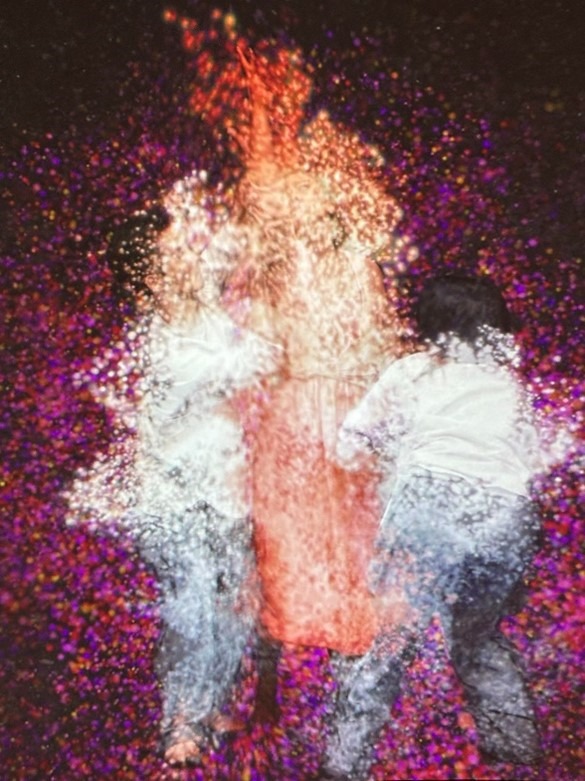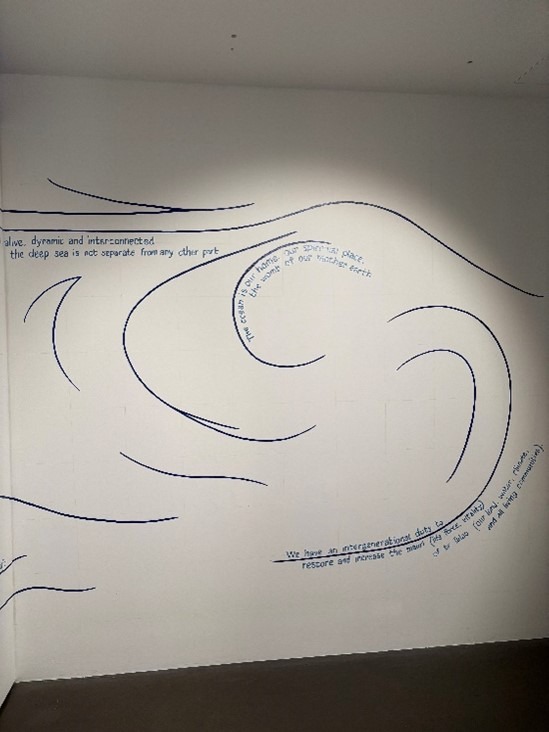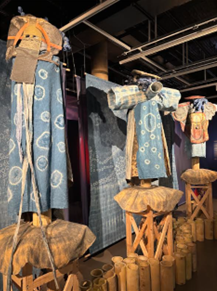3 thought-provoking ‘Vital Sign’ exhibitions showing intersections between art and science.

Can the emotion-based, imaginative concept of art collide with the facts-based, objective subject of science? Since late November, the public ‘Vital Signs’ exhibition hosted by the Kings College London university has educated audiences on the imminent dangers facing planet Earth. The displays point to the result of largescale human activities and unethical practices like deforestation that have produced a present-day aftermath that could advance further in potential damages if society sustains certain lifestyles and practices. As the name of the exhibition suggests, the assembly of artworks not only shows the vital signs heeding humanity of our impact on the natural world, but also how humanity is adapting as a response.
1. ‘Night Bloom’
Pictured above, this artwork features an idyllic display that combines different forms of art – through visual art and dance. A scene depicting images of illustrated butterflies and blossoms with colourful birds flying overhead, present a backdrop to three life form dancers who interact with the animations around them by performing a choreographed dance that include signs from traditional Chinese Sign Language. Initially bursting with life, the scenery eventually shows the dancers coming together only to disintegrate into a pixelated form, with a decay of flowers. The artwork intends to show the strength of the deaf community by using the natural environment as a metaphor, and certain elements of the dance are meant to show the mycorrhizal networks of fungi and plants which may be affected by the atmospheric CO2 that’s driving climate change.
2. ‘Rights of the Deep’

The ocean covers 70% of the Earth’s surface and is home to majority of the Earth’s species. However, practices such as deep-sea mining could affect sea creatures as well as coastal communities. ‘Rights of the Deep’ shows an activism that defends the rights of the ocean – by not just speaking up for the helpless animals, but the vast body of water encompassing them. The artwork demonstrates this through simple blue strokes meandering across a plain white wall. The art also incorporates text following the direction and shape of the blue lines, aiding to express the urgency of the matter. Though simplistic in nature, the artwork testifies to how deep sea mining would exacerbate climate change by affecting the ocean’s ability to absorb both carbon and heat.
3. 'I am the River Thames, and the River Thames is me'

Perhaps the most thought-provoking piece of the exhibition, the artwork alludes to the health state of water in the sewage system. The title of the piece shows the interconnection between the humans that produce the waste, and the English river that is a recipient of the waste. In the piece, eight figures can be seen standing on opposing sides. These handmade fashionable figures, made from sewer pipes and tye-dyed cloth represent the ‘river guardians’ and are symbols of protection, and borrows inspiration from New Zealand’s Māori tribe. Through these models, these personified elements of the river further add to the connection between the Thames and residents.
Post a comment